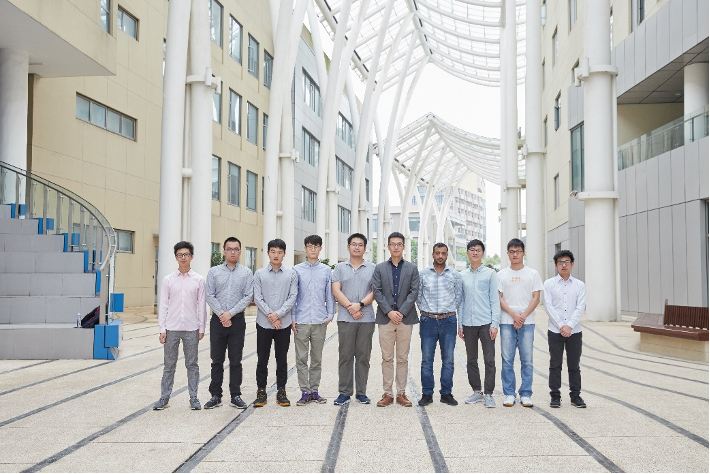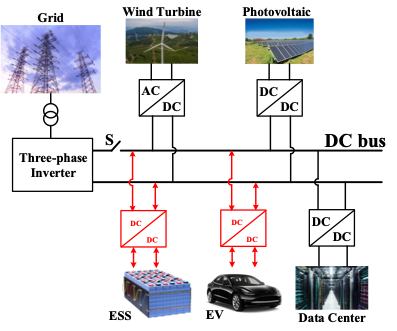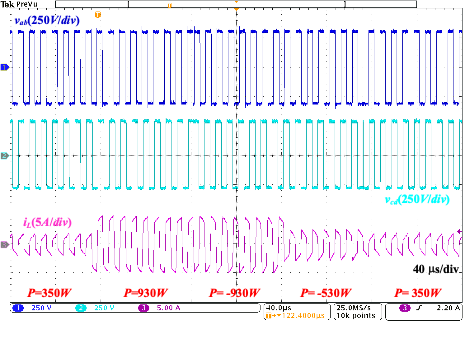The Power Electronics And Renewable energies Laboratory (PEARL) at SIST is committed to research in modeling, simulating, prototyping, and validating power electronics systems in the applications of electrified transportation, renewable energy systems, internet of things, data center and other emerging fields. The lab is under the direction of Associate Professor Wang Haoyu, and develops more efficient and high reliable power management solutions that take advantage of advanced topologies, power devices, magnetic materials, and control strategies. Recently, the PEARL group published two research papers in IEEE Trans. Ind. Electron, which provide new solutions to the topics of how to improve the dynamic response performance of dual-active-bridge (DAB) converters, and how to achieve single-input-dual-output (SIDO) isolated resonant power conversion.

Photo of the PEARL group
Universal control scheme to achieve seamless dynamic transition of dual-active-bridge converters using zero-current prediction
In dc microgrids, distributed renewable energy such as wind and solar energy is vulnerable to environmental changes and cannot continuously generate stable electric power. Therefore, it is necessary to use energy storage systems (ESS) as the power reservoir to improve the grids’ reliability. Bidirectional dc/dc converters must be installed between the ESS and dc grid to achieve bidirectional power flow. To solve the problems of dc bias of inductor current and slow dynamic response during frequent load changes occurring in a dual active bridge, the PEARL group proposed the quadruple-phase shift modulation method. The main idea is to add a phase shift between the primary side control signal and the controller carrier signal based on the classic triple-phase shift modulation, so that the zero-crossing point of the inductor current is synchronized with the carrier period. This method can effectively eliminate the bias current during the transient process and accelerate the dynamic response. The proposed control method is universal and applicable to all the mainstream modulation methods for DAB converters.


Typical dc microgrid architecture (left); a good control effect of the proposed method when loads change (right)
Second year Ph.D. candidate Shu Dongdong at SIST is the first author, and Prof. Wang Haoyu is the corresponding author.
Link to the paper:
https://ieeexplore.ieee.org/document/9464635
H5-Bridge based Single-Input-Dual-Output LLC converter with wide output voltage range
In applications such as multi-output programmable dc power supplies, integrated battery chargers, and multichannel LED drivers, multiple dc outputs with a wide output voltage range are required. The PEARL group proposed an H5-bridge based SIDO LLC converter with a wide output voltage range. An H5-bridge is utilized on the primary side and linked with two separate resonant tanks. By morphing the H5-bridge, the input of each resonant tank can be configured as either full-bridge, half-bridge, or idle. On the secondary side, the two output voltages can be adjusted through the control of two semi-active rectifiers on duty cycle. The converter is always tuned at the optimal resonant frequency and the output voltages are modulated by the secondary side pulse-width. Both output ports can achieve wide voltage ranges (100V-400V). In the converter circuit, all MOSFETs can achieve zero voltage switching (ZVS) turning-ON and all the diodes can achieve zero current switching (ZCS) turning-OFF over wide output voltage and load ranges. Therefore, the converter has good efficiency performance.

Schematic of the proposed SIDO LLC topology (left); voltage gain curves versus duty cycle under different factor Q (right)
First year Ph.D. candidate Wang Liang at SIST is the first author, and Prof. Wang Haoyu is the corresponding author.
Link to the paper: https://ieeexplore.ieee.org/document/9492828